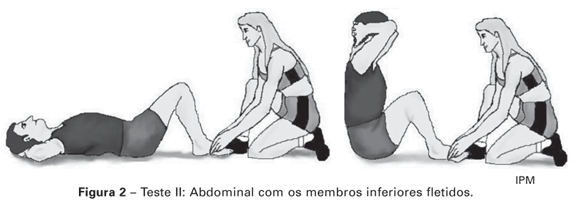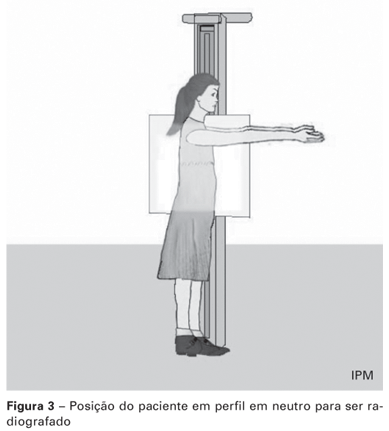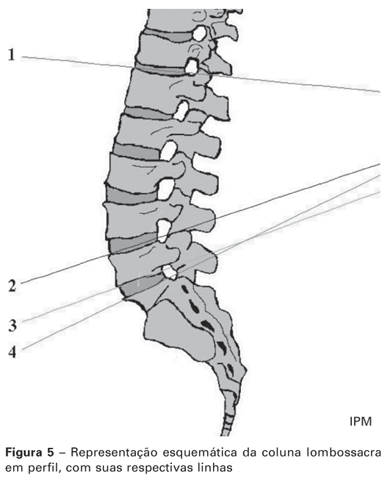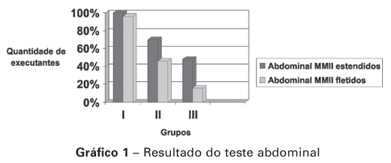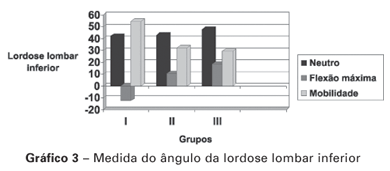The objective of this paper was to establish a normal standard for the values of angles for lumbar lordosis, to determine the clinical and radiological mobility in the sagittal (flexion-extension) of the lumbar spine and to test the strength of abdominal muscles in individuals of both genders and three different age brackets. METHODS: 150 individuals who had no pain complaints or vertebral deformities were evaluated, all of them chosen at random. The participants were divided into three groups of 50 individuals according to the age bracket I) 0 to 20; II) 21 to 40, and III) 41 to 60 in a total of 79 males and 71 females. All of them were submitted to radiographic exams of the lumbar spine in orthostatism, in profile, with the trunk in maximum flexion and in the neutral position. The research subjects were also evaluated for their capacity of performing abdominal exercises with extended and flectioned lower limbs in order to investigate the performance of lordogenic and anti-lordogenic muscles, respectively. On the X-rays, the following angles were measured: a) between the top of L1 and the top of L5; b) top of L1 and base of L5; c) top of L1 and top of S1; d) base of L5 and top of S1 (angle of the lumbosacral joint) and e) top of L5 and base of L5 (wedging of de L5). RESULTS: In the three groups, the mean results for angles a, b and c were, respectively, 37°, 44°, and 57° in neutral position, and -1°, 6°, and 11° in maximum flexion. In group I, the means were 33.3°, 42°, and 56.7°, in neutral position, and -18.8°, -12.4°, and -12.4° in maximum flexion; in group II, they were 36.1°, 42.9°, and 55,9° in neutral position, and 4.2°, 10.6°, and 18.1° in maximum flexion, and in group III, 41.2°, 48°, and 58.2°, in neutral position, and 12.6°, 18.5°, and 26.5° in maximum flexion. For the lumbosacral joint angle, means were 14.6°, 12.2°, and 10.1° in neutral position, and 1.4°, 7.5°, and 7.9° in maximum flexion for groups I, II, and III, respectively. The mean of the wedging angle of L5 was of 8.6°, 7.6°, and 4.4° in neutral position, and 5.9°, 6.1°, and 3.6° in flexion, for groups I, II, and III, respectively. Abdominal exercise with extended lower limbs was performed by 100% of the individuals in group I, 70% in II, and 48% in III; and with flectioned lower limbs it was performed by 96% in group I, 46% in II, and 16% in III. CONCLUSION: Increase in age is followed by a concomitant decrease in the flexion mobility of the lumbosacral spine and of the strength in abdominal muscles.
Lordosis; Spine; Imaging diagnostic; Low back pain


